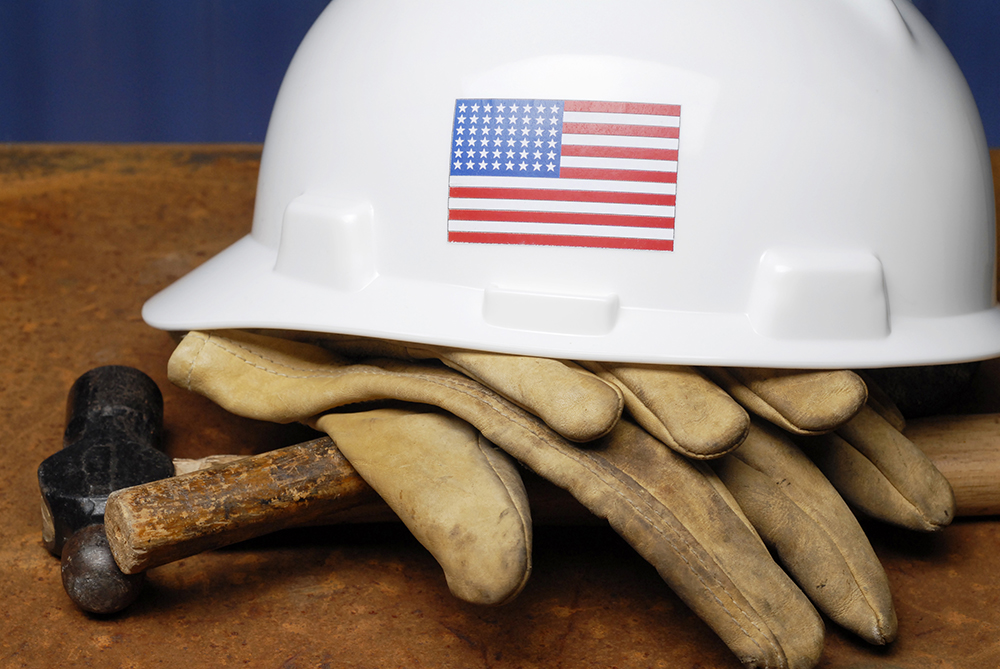The National Labor Relations Board (NLRB) is seeking input on its standard for determining what kinds of restrictions employers can put in place related to employees wearing union insignia on company uniforms.

The Board’s call for briefs is related to a case involving Tesla, Inc. The issue in the Tesla case focuses on when an employer that requires employees to wear company uniforms can prohibit workers from wearing shirts with union logos in place of the required uniform.
The NLRB’s three Republican members—Marvin Kaplan, William Emanuel, and John Ring—voted to seek briefs on what standard should be applied to employers with uniform policies. The sole Democrat on the Board, Chair Lauren McFerran, dissented.
The NLRB issued its call for briefs on February 12. It’s seeking opinions on whether the standard set in the 2010 Stabilus case should be applied. That decision is seen as being more friendly to employees wanting to wear union insignia than the decision in a 2019 case involving Walmart, which allowed the employer to restrict the wearing of union buttons on the sales floor.
The NLRB is asking for briefs on the following questions:
- Does Stabilus specify the correct standard to apply when an employer maintains and consistently enforces a nondiscriminatory uniform policy that implicitly allows employees to wear union insignia (buttons, pins, stickers, etc.) on their uniforms?
- If Stabilus doesn’t specify the correct standard to apply in those circumstances, what standard should the Board use?
Clarify Precedent
The Stabilus standard reiterated the burden on the employer to establish “special circumstances” whenever it sought to ban union insignias at work.
Robert A. Kaiser, an attorney with Armstrong Teasdale LLP in St. Louis, Missouri, says the goal of the NLRB’s three-member majority may likely be to clarify the precedent so that its reasoning is more in line with their December 2019 decision in Wal-Mart Stores, Inc. In that decision, the same three-member majority applied a more employer-friendly framework.
The three-member majority ruled in Wal-Mart Stores, Inc. that the employer’s uniform policy, which allowed “small, non-distracting” insignia no larger than the employee’s name badge—but was not a “total ban”—was lawful, and the employer had the right to prohibit employees from wearing the insignia on the selling floor. Away from the selling floor, however, the employer couldn’t prohibit union insignia.
The NLRB reasoned the company’s interest in protecting the customer shopping experience and guarding merchandise from theft outweighed any impact on workers’ rights to unionize. The majority in Wal-Mart applied the analysis set out in the Board’s 2017 Boeing decision, which requires balancing of the nature and extent of the potential impact on employee organizing rights with the legitimate business justifications given by the employer for the policy.
Kaiser pointed out the current Board is made up of the same four people—three in the majority and one dissenter—who heard the Wal-Mart Stores, Inc. case, and thus would be more likely to enunciate a standard in line with Wal-Mart and Boeing and distanced from Stabilus.
Kaiser points to the language used in the first question that focuses on an employer that “maintains and consistently enforces a nondiscriminatory uniform policy that implicitly allows employees to wear union insignia” as an opportunity to draw a distinction between the outright ban criticized in Stabilus from the more nuanced approach in Wal-Mart.
The Board’s call for briefs from the parties and even from outsiders (referred to as “amici”) also reflects a more recent sensitivity. The NLRB has faced criticism in the past for setting standards from case decisions, rather than by rulemaking, Kaiser says. That method of setting standards doesn’t allow stakeholders to submit comments.
The request in Tesla for briefs, including from outside groups that may want to weigh in, may avoid some of the criticism associated with issuing a standard without giving various parties the chance to submit input, he says.
Submitting Briefs
Briefs from the parties and from amici, not exceeding 25 pages, are to be filed with the NLRB on or before March 15. The parties may file responsive briefs, not to exceed 15 pages, on or before March 30.
Briefs can be filed electronically by going to www.nlrb.gov and clicking on “eFiling.” For assistance in filing through the website, contact the Office of Executive Secretary at 202-273-1940.
Tammy Binford writes and edits news alerts and newsletter articles on labor and employment law topics for BLR web and print publications.
